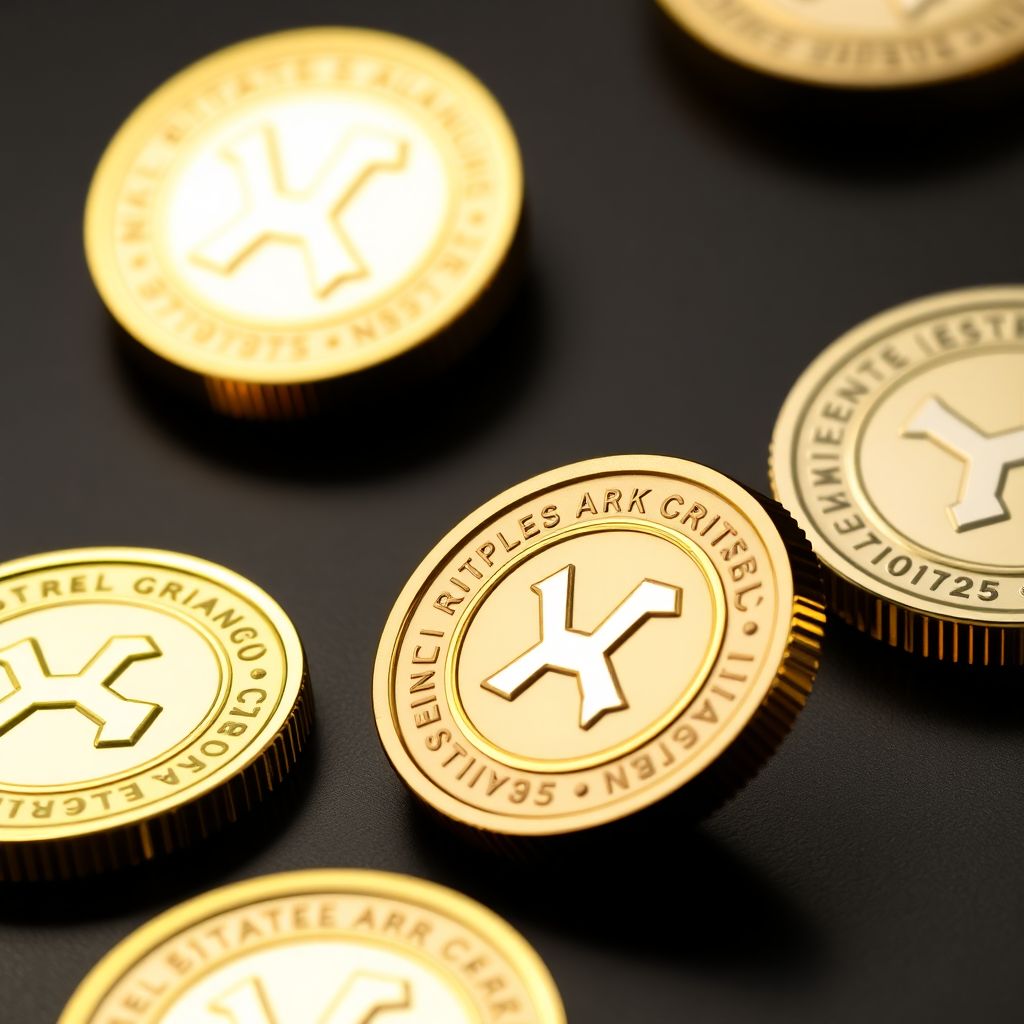XRP ETFs Poised for Launch Without SEC Approval: Will It Spark a Price Explosion?
In a pivotal development for the crypto industry, the Depository Trust & Clearing Corporation (DTCC) has officially listed nine exchange-traded funds (ETFs) linked to XRP, Ripple’s native digital asset. This step signals a growing institutional hunger for exposure to XRP, even as U.S. regulatory uncertainty continues to cloud the crypto landscape. These ETFs include a mix of futures-based and spot-based products, suggesting that the first spot XRP ETFs in the United States might debut imminently—potentially without direct approval from the Securities and Exchange Commission (SEC).
The appearance of XRP ETFs on the DTCC listing is an essential milestone in the launch process, although it does not immediately equate to active trading. Among the currently listed funds, futures ETFs such as UXRP, XRPI, XRPT, and XXRP are already live, while the spot ETFs—labeled TOXR, XRP, XRPC, and XRPL—are still awaiting the final regulatory green light or automatic effectiveness under new SEC rules.
Regulatory hurdles had previously slowed progress, especially after the October U.S. government shutdown, which paused review processes for more than a dozen altcoin ETF applications, including those involving Solana, Dogecoin, and Cardano. However, the tide appears to be turning. Canary Capital has withdrawn its delaying amendments and established November 13 as the automatic effective date for its XRP ETF, bypassing the need for further SEC approval unless objections are filed.
Asset management giants Bitwise and Grayscale have confirmed their intentions to launch XRP ETFs under the SEC’s updated framework, which allows funds to become effective automatically after 20 days if no formal objections are raised. This regulatory shift enables firms to introduce ETFs without direct SEC endorsement—a significant departure from the traditional approval process.
Bitwise has announced a 0.34% management fee for its XRP ETF, while Grayscale plans to charge 0.35%, mirroring the fee structure of its Dogecoin offering. Both firms are replicating their successful strategy used for Solana ETFs, which amassed over $56 million in trading volume on the first day, highlighting substantial institutional interest.
Market analysts are optimistic that the introduction of XRP ETFs could act as a major catalyst for price appreciation. According to Nate Geraci, president of NovaDius Wealth Management, the emergence of spot XRP ETFs may symbolize the end of a prolonged era of anti-crypto sentiment in U.S. regulation. Should these funds go live as anticipated, XRP could soon join Bitcoin, Ethereum, and Solana as a core asset class within the ETF market.
From a technical perspective, XRP remains resilient, trading above a critical support level at $2.25. Many traders see this price zone as the foundation for a potential bullish breakout. Market analyst Dominus has gone so far as to forecast that XRP could deliver “the largest green candle in crypto history,” driven by surging ETF-driven demand, rising institutional participation, and strengthening on-chain fundamentals.
Ripple’s ecosystem has also received a boost from its RLUSD stablecoin, which has now exceeded $1 billion in valuation. This milestone strengthens Ripple’s infrastructure and demonstrates growing trust in its digital asset solutions.
If XRP ETFs begin trading as expected in mid-November, the market could witness one of the most significant rallies in the asset’s history. The combination of institutional capital inflows, renewed retail interest, and expanding use cases within Ripple’s ecosystem sets the stage for a powerful upward move.
Broader Implications for the Crypto Market
The launch of XRP ETFs without explicit SEC approval could have far-reaching consequences for the wider cryptocurrency market. It may encourage other issuers to follow suit with ETFs based on altcoins like Cardano, Polkadot, and Avalanche, potentially accelerating mainstream adoption across the sector.
Furthermore, the precedent set by Bitwise and Grayscale signals a growing confidence among asset managers to pursue crypto offerings despite regulatory ambiguity. This confidence could help normalize digital asset investment vehicles within traditional finance and attract a broader base of institutional investors.
Potential Challenges Ahead
Although the outlook is optimistic, several challenges remain. Regulatory backlash is still a possibility, especially if the SEC decides to contest the automatic effectiveness of these filings. Moreover, market volatility and macroeconomic factors, such as interest rate changes and inflation concerns, could dampen investor enthusiasm in the short term.
Additionally, the performance of these ETFs in the first few weeks after launch will be closely monitored. If trading volumes or liquidity fall short of expectations, it may prompt a re-evaluation of institutional interest in altcoin-based ETFs.
What This Means for Retail Investors
For individual investors, the debut of XRP ETFs presents a new avenue for exposure to Ripple’s token without the complexities of managing digital wallets or dealing with crypto exchanges. ETFs offer regulated, secure, and easily accessible investment vehicles, making it simpler for retail participants to gain exposure to the crypto market.
However, as with any investment, due diligence is essential. Investors should be mindful of management fees, market risks, and the evolving regulatory environment when considering positions in XRP ETFs.
Looking Ahead: XRP as a Core ETF Asset
If XRP ETFs achieve the expected success, XRP may solidify its place as a foundational asset in the digital economy. Inclusion in ETF portfolios can enhance liquidity, reduce volatility over time, and contribute to price stabilization—key characteristics needed for long-term institutional adoption.
In conclusion, the imminent rollout of XRP ETFs—especially without direct SEC approval—marks a pivotal moment for both Ripple and the broader crypto asset class. Whether this leads to the long-anticipated price surge remains to be seen, but the convergence of regulatory innovation, institutional interest, and robust technical fundamentals points to a potentially transformative phase in XRP’s market trajectory.

